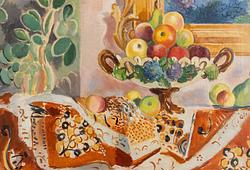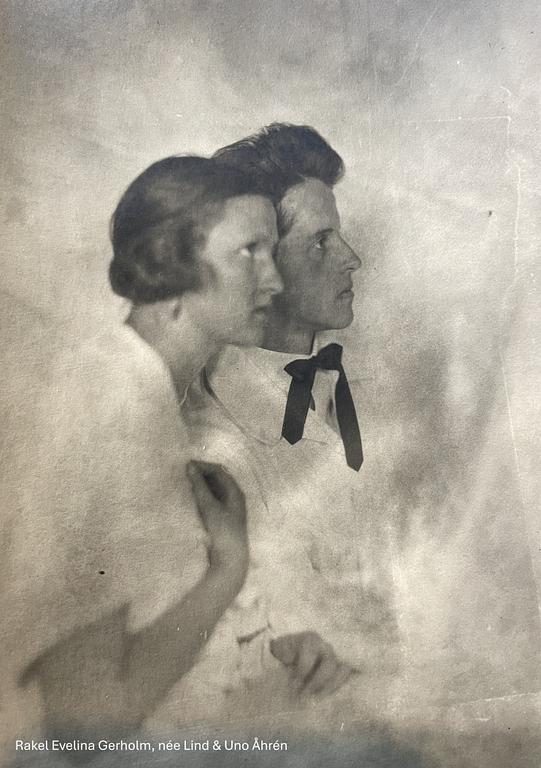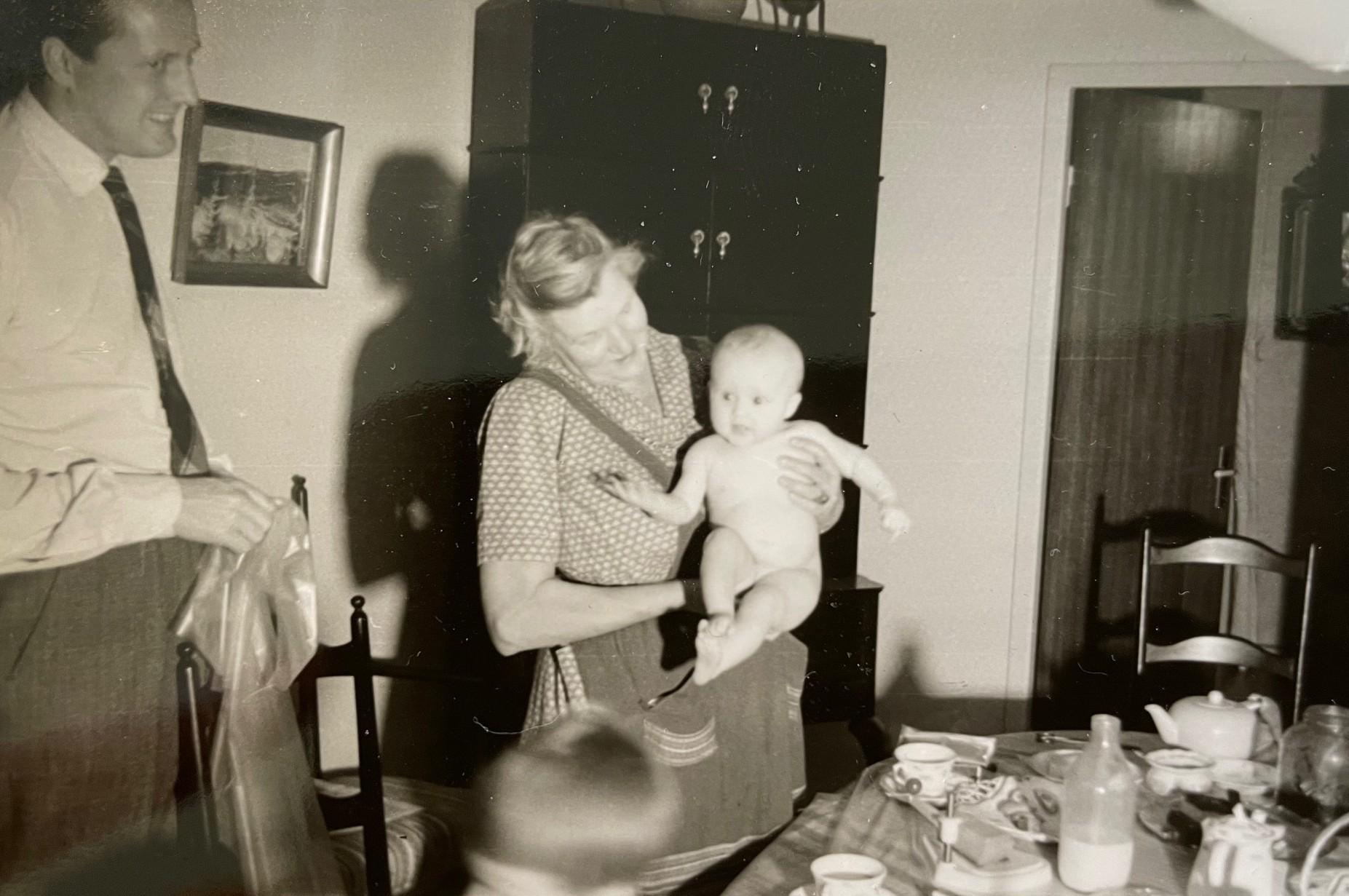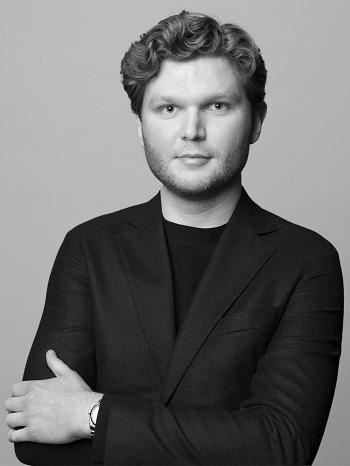Uno Åhrén
A set of eight Swedish Grace dining chairs, 1920s.
High back, on curved legs, two of which with armrests, upholstered seat covered in coral red textile. Height 107 cm, seat height 47 cm.
Wear, minor damages and repairs. Later overpainted.
Provenance
Rakel Evelina Gerholm, née Lind (1902-1975), a gift from Uno Åhrén during the first half of the 1920s.
Thence by descent to the present owner.
More information
The dining suite presented in this sale, consisting of a two-part cabinet, a dining table and eight chairs, has a design language that is typical for Åhrén during the first half of the 1920s, and bears similarities to the glossy black furniture designed by him, executed by Gemla and exhibited by David Blomberg at the Gothenburg Exhibition in 1923. Also worth noting is the structure of the upper cabinet in six fields, which recurs in the magnificent intarsia cabinet that was part of Åhrén's ladies' salon at the Paris Exhibition in 1925, today in the collections of Nationalmuseum in Stockholm (NMK 1/2018). Furniture designed by Uno Åhrén and executed during the first half of the 1920s is exceptionally rare, and the present pieces carries a story about a past youthful love that was highly personal to the architect. Read more about Uno Åhrén and the dining suite
Bukowskis wishes to thank Tom Åhrén for valuable insights cataloguing the present lot.
Designer
Uno Åhrén was a Swedish architect who graduated from Tekniska Högskolan i Stockholm (the Royal Institute of Technology) in 1919. Uno Åhrén made his debut with a residential interior at the "Home Exhibition" at Liljevalchs in 1917. He was one of the earliest collaborators with Estrid Ericson at the Svenskt Tenn. Åhrén participated in the Paris World Fair in 1925 with a ladies' salon.
Åhrén, who would become one of the main advocates of functionalism, he only worked as a furniture designer at the beginning of his career. The late 1920s in Sweden were marked by Åhrén's radical thoughts and ideas; he was one of the most eager proponents of functionalism, including as a co-author of the publication "acceptera".
Åhrén's focus was primarily on the social perspective in housing issues. From the late 1910s onwards, Uno Åhrén participated in a number of industrial art exhibitions: in addition to the mentioned Home Exhibition in 1917, the Gothenburg Exhibition in 1923, the Paris World Fair in 1925, the Stockholm Exhibition in 1930, and the World Fair in Chicago in 1933. After 1930, Åhrén devoted himself mainly to urban architecture and city planning, including as a city planning architect in Gothenburg from 1932-43 and as the head of Svenska Riksbyggen during the 1940s. He is most renowned for his strong pathos as a driving debater in the social housing issue. For Svenskt Tenn, he designed both furniture and pewter objects of a more luxurious nature.








































































